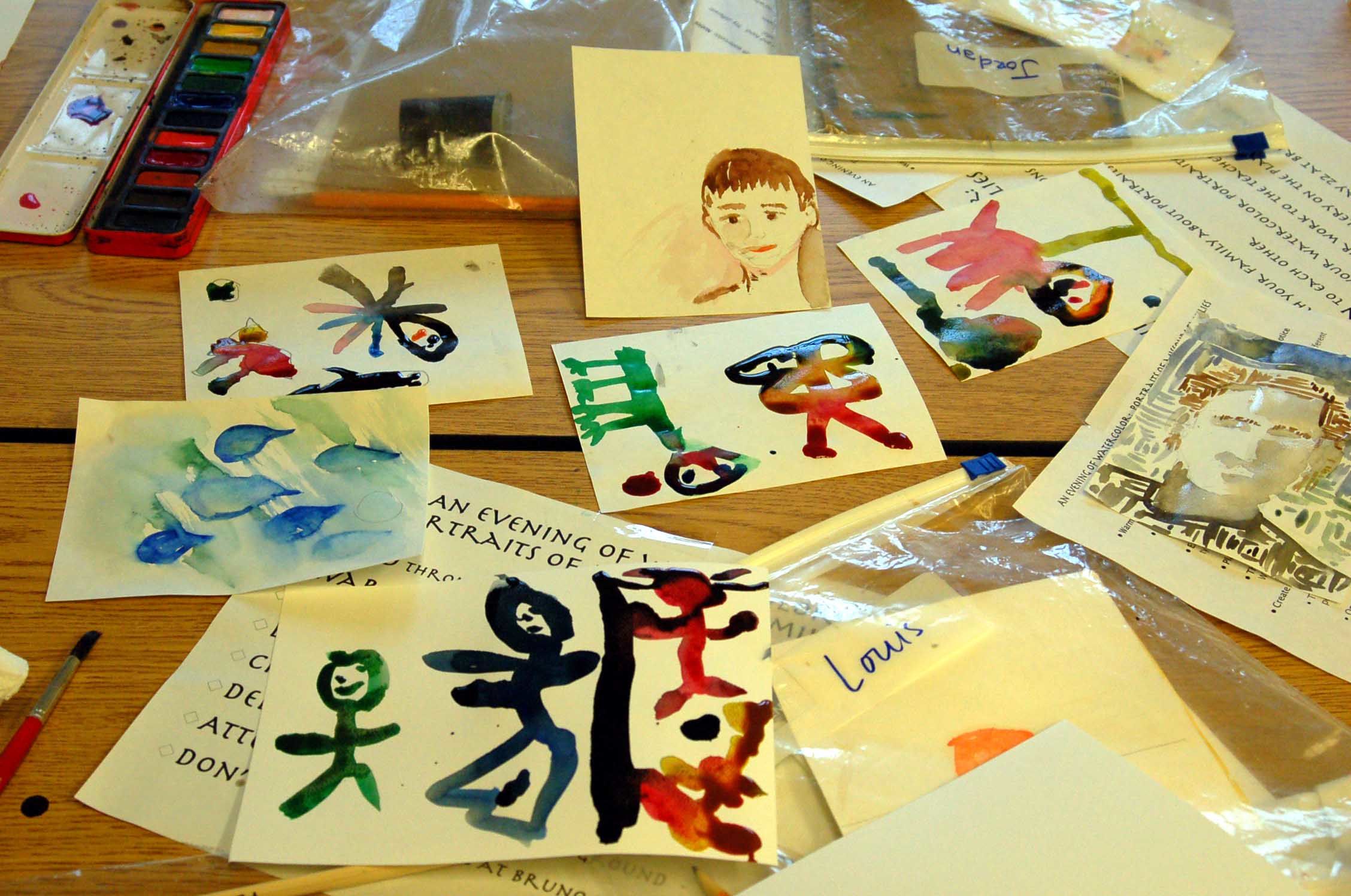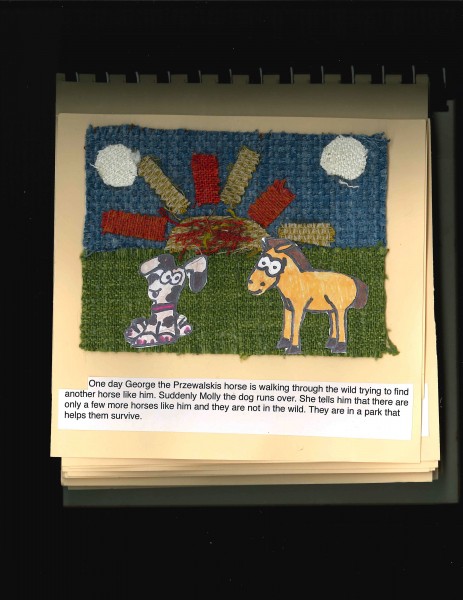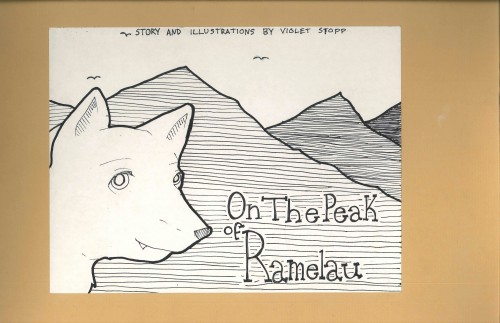 A couple of weeks ago, I alluded to a current project, the composition of an iBook (the Apple version of eBooks that are designed for viewing on iPads only). This new software was first introduced to me by my brother-in-law, Joe Levine, the co-author of one of the very first iBook textbooks, the best selling high school Biology textbook in the country. Joe first described the Apple software to me three years ago when it was still in design/development, and he alluded to a project he was working on but couldn't tell me about because it was an exciting top secret! Turns out the project was the textbook in iBook. His iBook version of Biology hit the market the day Apple began giving away iBook Author, about a year ago.
I've just completed the first draft of an iBook, What Are the Relationships between Animals and Humans, A Year Long Multidisciplinary Research Project by Three to Thirteen Year Olds at The St. Michael School. I spent the month of October working on it on site with the faculty at The St. Michael School. Our plan is to continue to edit the book over the next few weeks, then open it for view to parents and a limited outside audience (if you'd like to be among them send a request to ashley@cadwellcollaborative.com. After the vetting process, we'll publish it at the Apple iBooks website for all the world to see.
A couple of weeks ago, I alluded to a current project, the composition of an iBook (the Apple version of eBooks that are designed for viewing on iPads only). This new software was first introduced to me by my brother-in-law, Joe Levine, the co-author of one of the very first iBook textbooks, the best selling high school Biology textbook in the country. Joe first described the Apple software to me three years ago when it was still in design/development, and he alluded to a project he was working on but couldn't tell me about because it was an exciting top secret! Turns out the project was the textbook in iBook. His iBook version of Biology hit the market the day Apple began giving away iBook Author, about a year ago.
I've just completed the first draft of an iBook, What Are the Relationships between Animals and Humans, A Year Long Multidisciplinary Research Project by Three to Thirteen Year Olds at The St. Michael School. I spent the month of October working on it on site with the faculty at The St. Michael School. Our plan is to continue to edit the book over the next few weeks, then open it for view to parents and a limited outside audience (if you'd like to be among them send a request to ashley@cadwellcollaborative.com. After the vetting process, we'll publish it at the Apple iBooks website for all the world to see.
Here are a number of reasons I loved working in iBook Author:
1. Because I am familiar with the Apple word processing program "Pages" and the Apple presentation program "Keynote" I found iBook Author very easy to use. The format is very similar and the commands are in many cases identical. Now, I am a Neanderthal in the World of Computers; so, two things: if I can use this program, any one can; and, I am a veteran Mac user and addicted to the Apple One to One program...while in St. Louis I was tutored by teachers at the Apple Store at the Galleria: Sean, Sean, Alan, Ben, Dan and Bob (this is the best $99 I spend all year...I can use it in any Apple Store...Boston or St. Louis...or...). I know, now you're wondering, How much is Apple paying him? I wish they were. I'd gladly accept and give the entire multimillion dollar endorsement fee to The St. Michael School where all the real work was done.
2. The medium fits the message, to adapt a 70's phrase from Marshal McLuhan. In this case the message is: Make Children's Learning Visible.
This is the cover of a 37 page book, written and illustrated by a sixth grader for primary grade children. In her story, the author, Violet advocates for more humane treatment of animals. Violets classmates each wrote illustrated books. In the iBook we were able to create galleries that hold scanned reproductions of eight of these books. Each of them a different story and a different medium. I can't resist, here is page two of Hope's story, George the Horse:
I insert these two pieces not so much as enticement to ask for more, but as an opportunity to state that in the iBook the whole process of making the illustrated stories are there (in over 200 slides) for the viewing and discerning and wondering and adapting.
This software allows the author to feature children's work extensively. It has been and will always be prohibitively expensive to publish on paper an expansive documentation of children's works. That said, of course, there are several wonderfully informative narratives about the process of creating a school environment that stimulates excellent student work. Two of my favorites are: An Ethic of Excellence, by Ron Berger, and Bringing Learning to Life, by Louise Cadwell (full disclosure: yes, Louise is my wife and partner in Cadwell Collaborative and mother of Alden and Chris and grandmother of Asher). When I think about what these two authors did with their limited medium, I can only wonder what they'll do when they discover iBook Author.
3. An expansion of #2...The medium is interactive. The first draft of our iBook includes galleries (slideshows) with several hundred photos of children making things together, videos of their conversations and productions, transcripts of dramatic productions, photographic and scanned reproductions of books made by students, keynote presentations composed by students, reproductions of "advocacy brochures" composed by students. All of these works are given context by the teachers' curriculum maps and reflections. However, relative to the volume of representation of the children's work, the teacher's work is maybe 20%.
The big difference in the first iteration of our iBook and previous documentation of long and short term projects, is that in the past we have tended to focus more on teachers' narratives and reflections, whereas in the iBook we have chosen to take full advantage of the medium; to layout much of the story in photos, dialogue, and in expanded records of the children's creations. We have consciously chosen to maximize Making the Children's Learning Visible.

